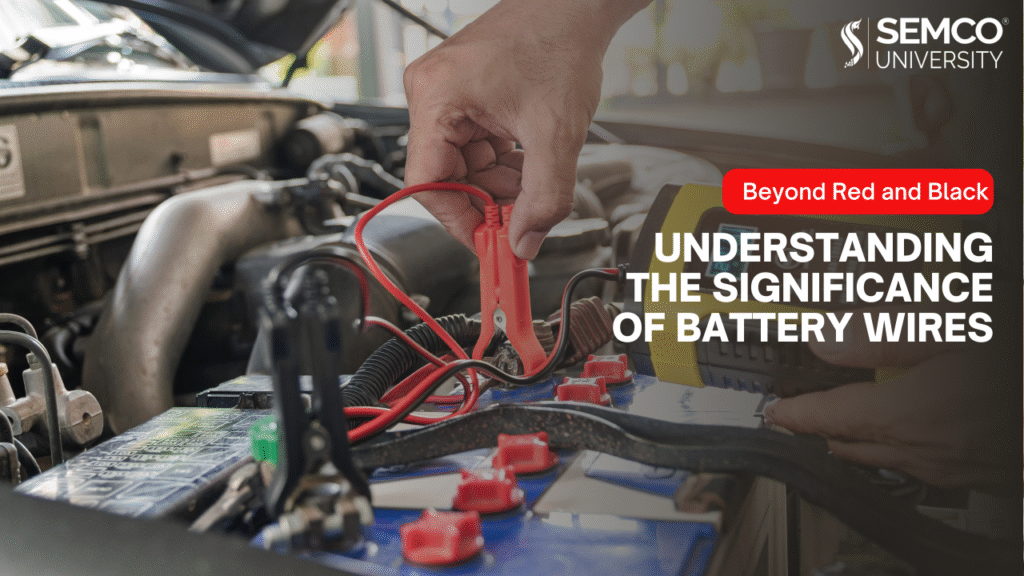When you glance at a typical lithium battery, you’ll likely see two protruding wires: the familiar red for the positive terminal and black (or sometimes blue) for the negative. This simple two-wire setup serves as the fundamental connection for charging and discharging, powering a multitude of basic devices like small toys and flashlights. While adequate for these straightforward applications, this configuration has inherent limitations when it comes to safety and optimizing battery performance in more demanding scenarios.
Stepping up from this basic arrangement is the increasingly common two or three-wire configuration, particularly in applications where safety and efficiency are paramount. The introduction of a third wire unlocks crucial functionalities that significantly enhance the reliability and longevity of lithium batteries. Let’s explore the vital role this seemingly small addition plays.
The Power of Three: Enhanced Safety and Performance
Compared to its two-wire counterpart, a three-wire lithium battery offers significant advantages, primarily centered around enhanced safety and optimized performance. The crucial third wire acts as a dedicated channel for vital information and control, enabling features that are simply not possible with a basic two-wire system.

1. Real-time Temperature Monitoring: Preventing Overheating Hazards
The most common and arguably most critical function of the third wire is to connect a built-in temperature sensor, typically a thermistor. This dedicated connection allows the device’s power management system to monitor the battery’s operating temperature in real-time. This constant thermal surveillance is a crucial safety mechanism, preventing the battery from overheating, a condition that can lead to performance degradation, reduced lifespan, and, in extreme cases, safety hazards. By continuously tracking temperature, the system can proactively take measures like reducing charge/discharge rates or even shutting down the operation to prevent thermal runaway.
2. Precise Voltage Balancing: Extending Battery Pack Lifespan
In applications that utilize multiple lithium battery cells connected in series (such as in electric vehicles and power tools), maintaining voltage balance between individual cells is essential for maximizing the lifespan and overall performance of the entire battery pack. The third wire provides a dedicated pathway for implementing voltage balancing mechanisms. By accurately monitoring and controlling the charge state of each cell, the system can ensure that no single cell is overcharged or over-discharged. This balanced operation prevents premature aging of individual cells, leading to a significantly extended service life for the entire battery pack and improved overall efficiency.
3. Data Communication: Intelligent Battery Management
In more sophisticated, high-end applications, the third wire can also serve as a dedicated communication line, transmitting vital battery status information to an external management system. A prime example is in electric vehicles, where the vehicle’s central management system can obtain critical data such as the battery’s remaining charge level, its state of health (SOH), and other operational parameters through this dedicated communication channel. This real-time data enables the vehicle’s system to make intelligent adjustments to power delivery, charging strategies, and provide accurate range estimations to the user.
Navigating Your Needs: Choosing the Right Number of Wires
When selecting a lithium battery, the number of leads is a key consideration. Here are some crucial factors to help you make the right choice:
- Equipment Power: High-power devices that draw significant current, such as electric drills or power tools, generally require the enhanced safety and management capabilities of a three-wire system.
- Operating Environment: If the device is expected to operate in environments with high ambient temperatures or where the battery might experience significant temperature fluctuations, a three-wire system offers a crucial layer of safety through its temperature monitoring capabilities.
- Cost Budget: It’s important to note that three-wire batteries typically come with a slightly higher price tag, usually in the range of 15-20% more than their two-wire counterparts, due to the added components and complexity.
- Maintenance and Diagnostics: A three-wire system can often provide early warnings of potential battery faults, potentially identifying up to 80% of issues before they become critical, simplifying maintenance and troubleshooting.
A Word of Caution: It is crucial to emphasize that unauthorized modification of the battery leads can severely damage the battery’s internal protection system and lead to dangerous situations. Studies have shown a significant correlation between improper wire modifications and battery fires in devices like electric scooters. Always adhere to the manufacturer’s specifications and avoid any alterations to the wiring.
Conclusion: Understanding the “Little Tails” for Enhanced Power and Safety
The choice between a two-wire and a three-wire lithium battery configuration ultimately hinges on the specific requirements of the application. For scenarios demanding high efficiency, exceptional reliability, and extended lifespan, such as electric vehicles, drones, and advanced power tools, the three-wire configuration offers a clear advantage through its enhanced safety features and intelligent management capabilities. Conversely, for cost-sensitive products with simpler power demands and less critical safety considerations, a two-wire configuration may suffice.
By understanding the subtle yet significant differences between these configurations and the practical implications they carry, whether you are an everyday user or a technical professional, you can make informed decisions that not only ensure optimal performance but also prioritize the safety of yourself and your equipment. So, the next time you’re considering a lithium battery, take a closer look at those “little tails” – they hold more significance than you might think.

